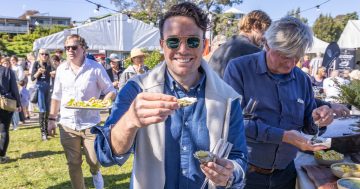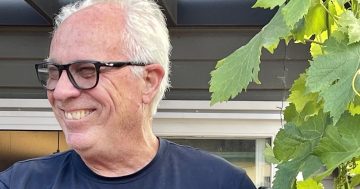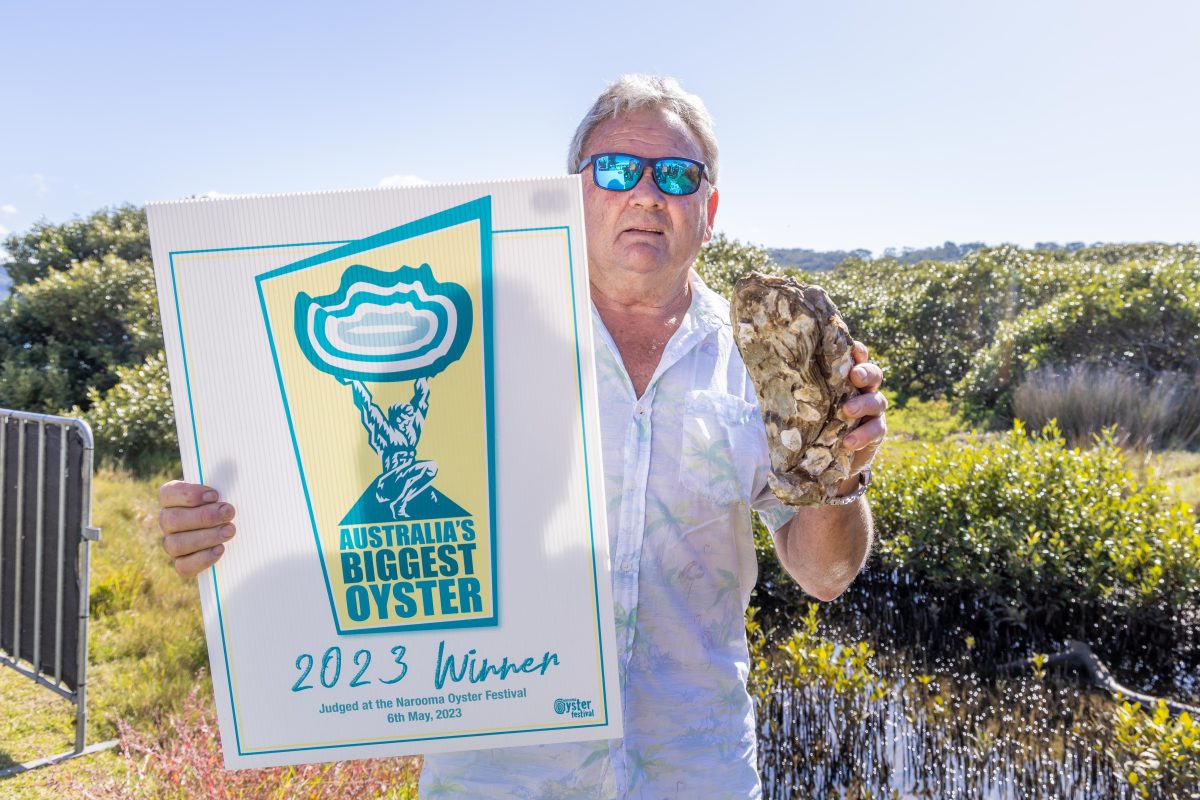
Bernie Connell with his 2.74 kg Clyde River oyster. Photos: David Rogers.
At one point, Australia had a serious chance of having the world’s biggest oyster – it had the weight to get into the Guinness World Records but sadly not the length.
Nonetheless, Australia’s biggest oyster competition has gone on to become a family favourite at the annual Narooma Oyster Festival.
Montague Vets’ Dr Kate Le Bars has been involved since the first competition in 2018 when Australia hoped to smash the world record. Kate was there to ensure it was alive. That means the shell is closed and the oyster passes the “sniff test”.
“They smell pretty bad if they are not alive,” she says.
Dressed in her vet’s uniform, it is Kate’s responsibility to weigh the oysters, administer the “sniff test” and check them with her stethoscope.
“It is part of the pageantry, drama and fun of it,” she says.
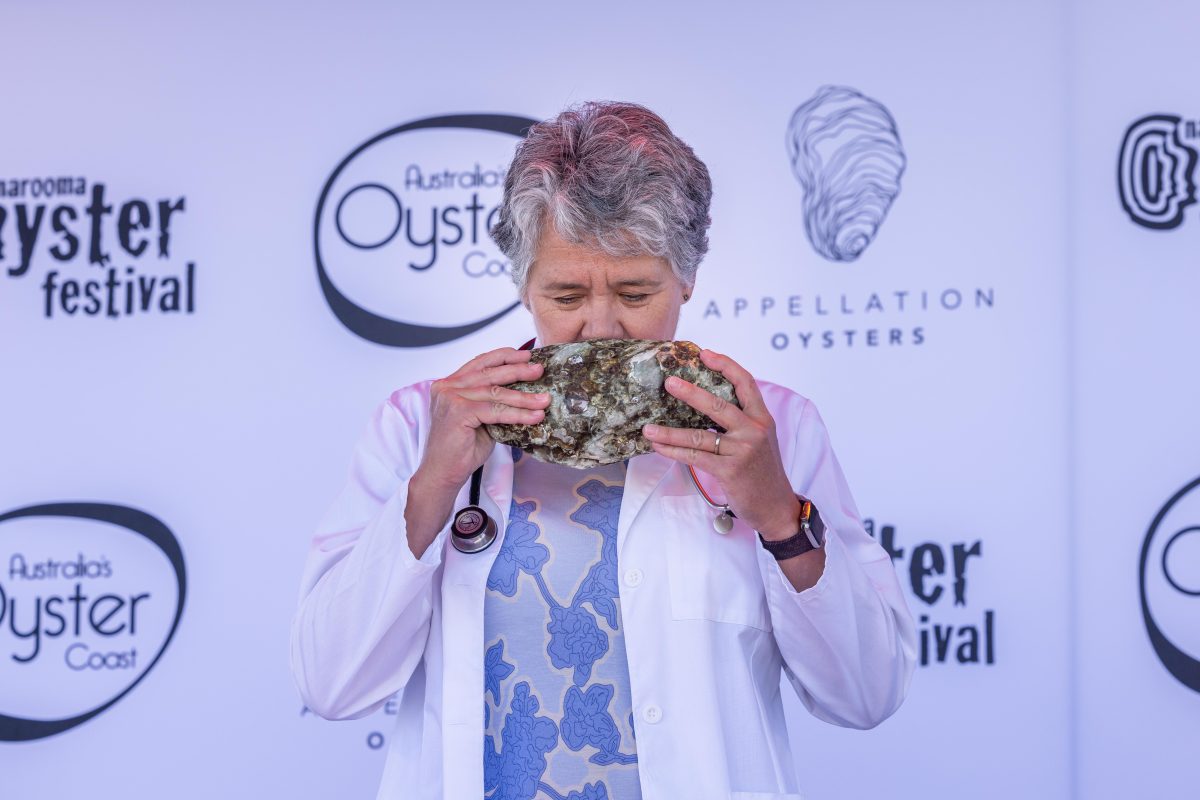
Montague Vets’ Dr Kate Le Bars performs a ”sniff test” at Australia’s Biggest Oyster competition.
In 2018, it was Bernie Connell’s oyster Jack that was tipped to break the world record. Bernie also grew Jill, who won last year’s competition.
Born and bred in Batemans Bay, he is a fourth-generation oyster farmer who has been out in cold mud at 5:30 am checking the family’s oysters since he was 14. The oyster leases have been in his family for 96 years and the family has been on the property for 190 years.
To say there is a fair bit of rivalry at the competition is an understatement, but Bernie willingly shares how he regularly produces gigantic Pacific oysters. Each year he buys new stock from a hatchery in Tasmania. He puts them on the mouth of the Clyde River for six weeks, grades them, then puts them back out.
“In every batch there will be ones that are six to eight times bigger than the others and we put them aside,” Bernie says.
He had around 12 dozen big beauties primed to follow in the footsteps of Jack and Jill but lost around half of them to floods in early April.
“Pacific oysters don’t like fresh water. They were all so beautiful, as big as your hand,” he says.
Jill, who weighed in at 2.89 kg last year, survived and will be one of this year’s entrants at the festival on Saturday, 4 May.
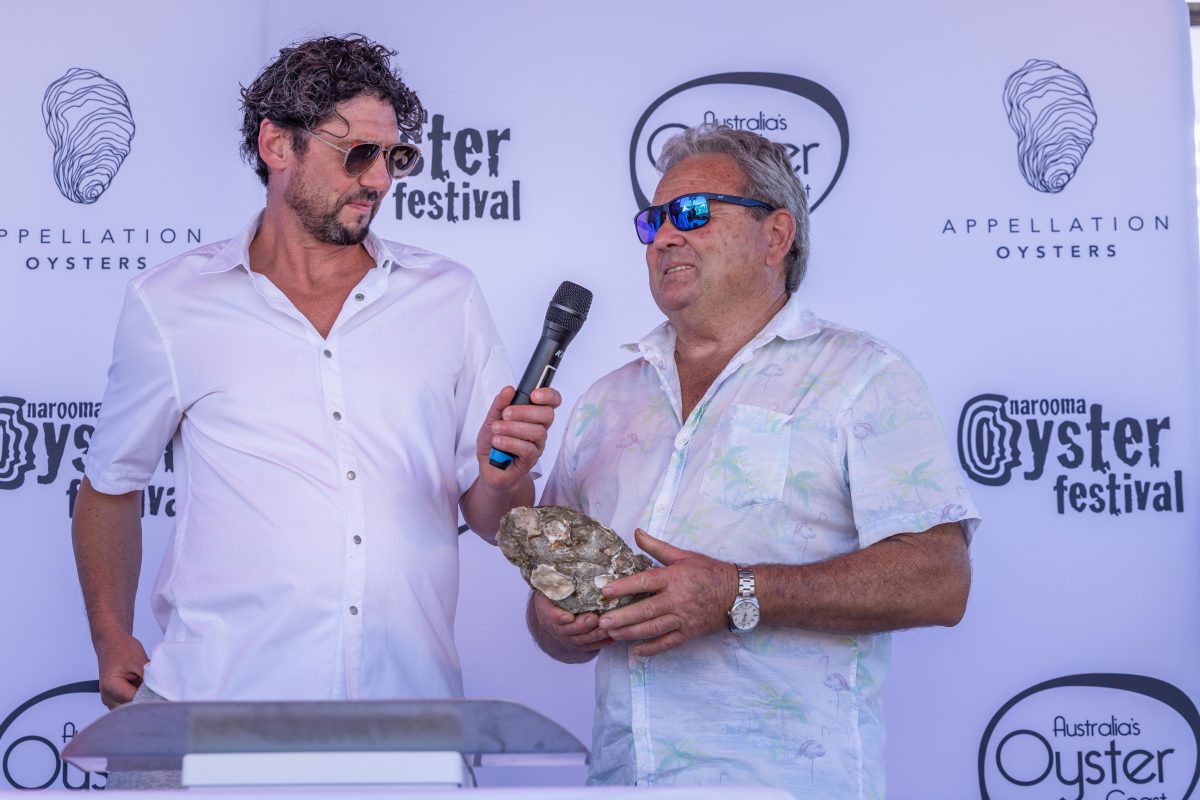
Celebrity chef Colin Fassnidge with Bernie and his winning oyster.
Pacific oysters eat 19 types of algae, while Sydney rock oysters only eat three types. Consequently, Sydney rock oysters take between two and a half and three years to mature, versus 12 months for Pacific oysters.
“Pacifics are unreal,” Bernie says.
Kate says oysters can change gender from year to year depending on the availability of food. Therefore, Jack may have been a female, and Hagrid, another former winner, may have been Hermione.
Tongue-in-cheek, Kate says the shellfish take on personalities over the years.
“After his victory in 2018, the following year Jack had sunglasses, an entourage of groupies and his own set of wheels, a bespoke pram.”
The high-stakes competition is full of drama. On occasions when oysters have been within one or two grams of each other, some competitors claimed rivals were not following the ”single-oyster” rule because rivals’ oysters had smaller ones clinging to them. Adding to the tension, the wind can affect the weighing scales.
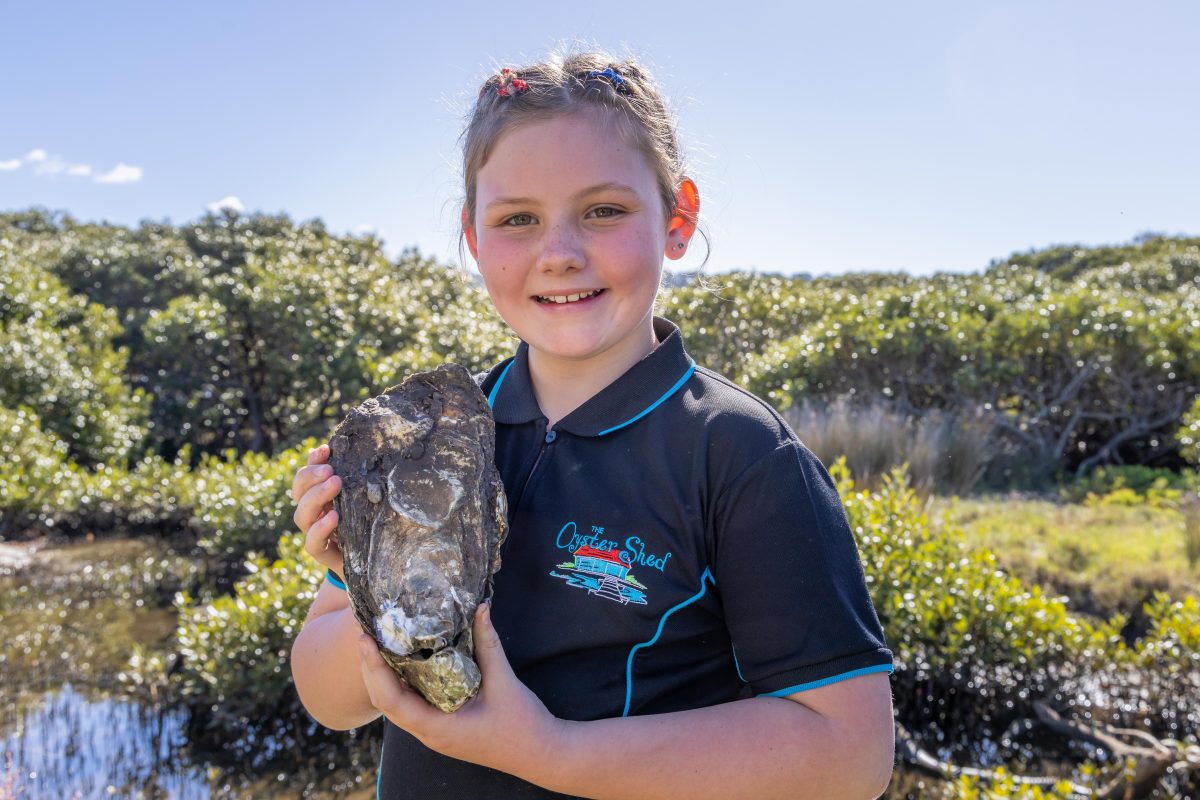
Avia Norris of Farm Gate on Wray Street. She was nine in 2023, and so was her oyster Finneas.
The Narooma Oyster Festival is run by Narooma Rocks. Narooma Rocks chair Cath Peachey says it is the banter of the oyster farmers that makes the competition so much fun.
“We don’t take it too seriously,” she says. ”We ask them about the oyster’s training program, what they feed them and what exercises they do. It is a fun event at the festival not to be missed.”
The competition draws huge crowds around the main stage, with kids in the front row clamouring to have their photograph taken with the champion oyster.
One thing is for sure. Bernie will be there proudly pushing Jill around in the pram, surrounded by admirers.
The oyster festival is on 3-4 May. For more information and tickets, visit the Narooma Oyster Festival website.
Original Article published by Marion Williams on About Regional.


